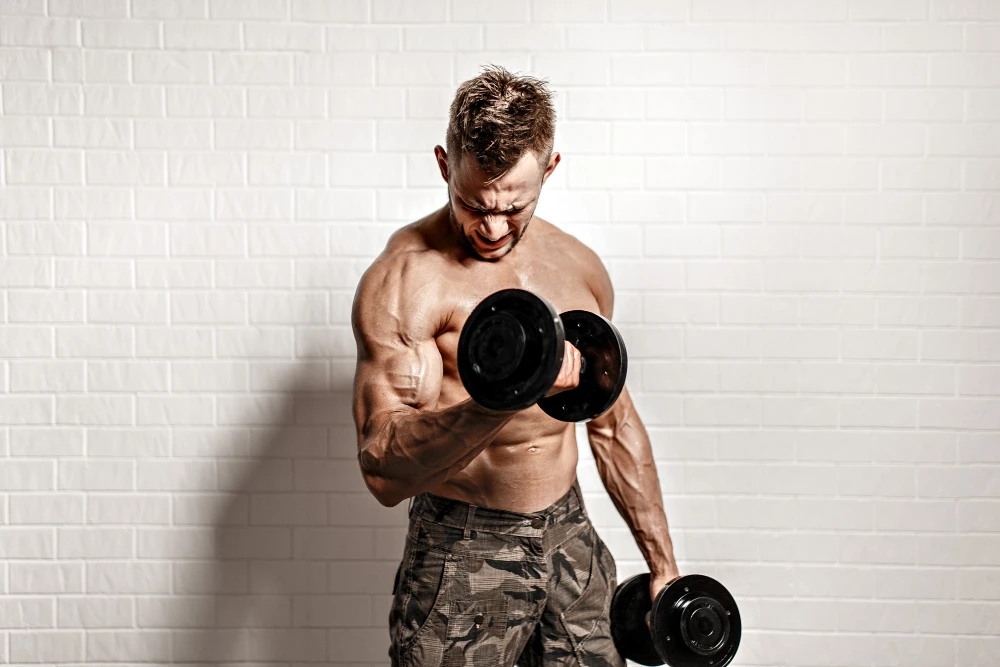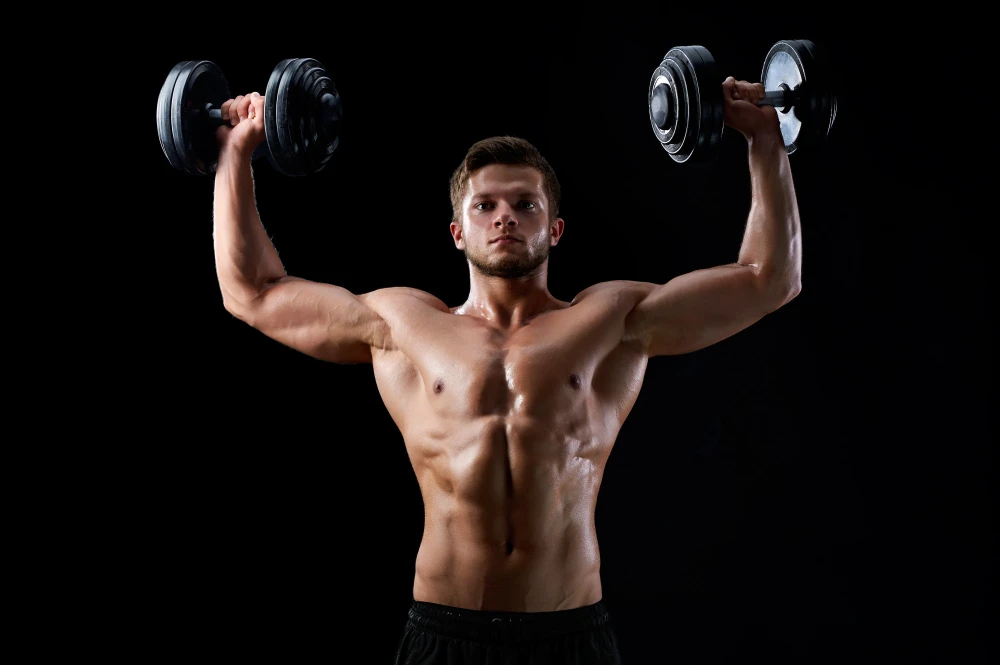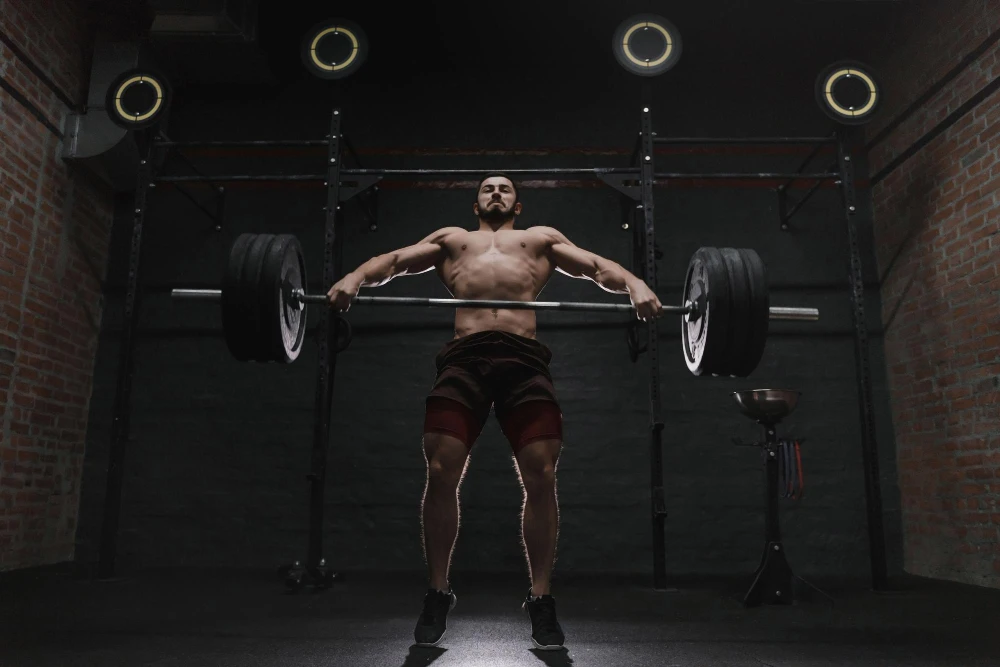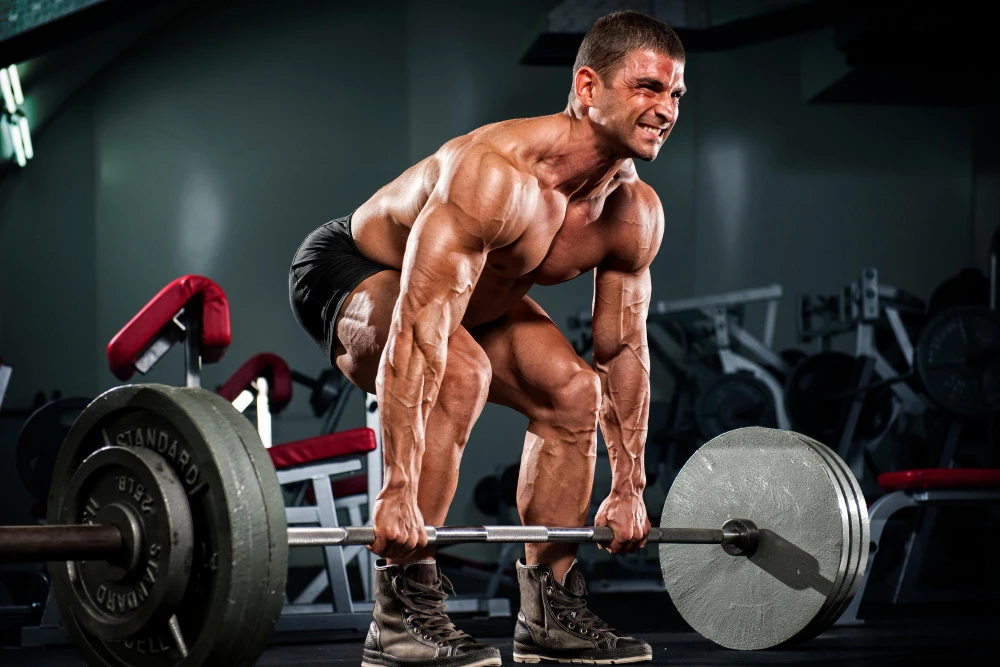Are you looking to start working out at home but don’t have any equipment? Look no further than bodyweight training.
In this beginner’s guide to bodyweight training, we will cover everything you need to know to get started, from the benefits of bodyweight training and how to warm up properly to advanced exercises and common mistakes to avoid.
By the end of this article, you will have all the tools you need to start a successful bodyweight training regimen in the comfort of your own home.
What is Bodyweight Training?
Bodyweight training is a workout that utilizes the resistance of your own body weight. It’s equipment-free and can be done anywhere, making it ideal for home workouts. Push-ups, squats, lunges, and planks are among the exercises used to build strength, endurance, and flexibility.
Benefits of Bodyweight Training
Bodyweight training is a type of exercise that uses your own body weight as resistance. It is a great way to get in shape, improve your strength and endurance, and lose weight. Bodyweight training is also a very convenient and affordable form of exercise, as you can do it anywhere, without any equipment.
Here are some of the benefits of bodyweight training:
- It’s convenient and affordable. You can do bodyweight training anywhere, without any equipment. This makes it a great option for people who don’t have access to a gym or who are on a budget.
- It’s effective. Bodyweight training can be just as effective as weight training for building strength and muscle mass. In fact, a study published in the Journal of Strength and Conditioning Research found that bodyweight training can be even more effective for improving muscle endurance.
- It’s versatile. There are many different bodyweight exercises that you can do, which means that you can tailor your workouts to your specific fitness goals. You can also make bodyweight exercises more challenging by adding resistance bands or weight vests.
- It’s safe. Bodyweight training is a low-impact form of exercise, which means that it is easy on your joints. This makes it a good option for people who are recovering from an injury or who have joint pain.
If you are looking for a convenient, affordable, and effective way to get in shape, bodyweight training is a great option. There are many different bodyweight exercises that you can do, so you can tailor your workouts to your specific fitness goals. Bodyweight training is also a low-impact form of exercise, which makes it a good option for people who are recovering from an injury or who have joint pain.

How to Warm-up for Bodyweight Training?
To prepare for bodyweight training, begin with a light cardio routine like walking or jogging in place for at least five to ten minutes. Enhance your flexibility and range of motion with dynamic stretches like arm circles and leg swings. Easy variations of the upcoming workout’s routines can also serve as an effective warm-up. Incorporating cardio and dynamic stretches into your bodyweight workout regimen will not only enhance endurance but also prevent injuries.
Nutrition for Bodyweight Training
Nutrition is an important part of any fitness program, but it is especially important for bodyweight training. Bodyweight training is a great way to build muscle and strength, but it can also be demanding on your body. Eating a healthy diet can help you recover from your workouts, build muscle, and lose weight.
Here are some tips for eating a healthy diet for bodyweight training:
- Eat plenty of protein. Protein is essential for building and repairing muscle tissue. Aim to eat 1 gram of protein per pound of body weight each day.
- Eat complex carbohydrates. Complex carbohydrates provide your body with sustained energy. Good sources of complex carbohydrates include whole grains, fruits, and vegetables.
- Eat healthy fats. Healthy fats are essential for hormone production and brain function. Good sources of healthy fats include avocados, nuts, and seeds.
- Stay hydrated. It is important to stay hydrated, especially when you are working out. Drink plenty of water throughout the day, and especially before, during, and after your workouts.
- Avoid processed foods. Processed foods are high in unhealthy fats, sugar, and sodium. They can also be low in nutrients.
- Eat plenty of fruits and vegetables. Fruits and vegetables are packed with vitamins, minerals, and fiber. They are also low in calories and fat.
Here are some sample meal plans for bodyweight training:
- Breakfast: Oatmeal with berries and nuts
- Lunch: Salad with grilled chicken or fish
- Dinner: Brown rice with vegetables and tofu
- Snacks: Fruits, vegetables, nuts, seeds
It is important to adjust your diet based on your individual needs and goals. If you are not sure what to eat, talk to a registered dietitian.
Here are some additional tips for eating a healthy diet for bodyweight training:
- Eat breakfast every day. Skipping breakfast can make you feel tired and sluggish, which can make it harder to work out.
- Eat regular meals and snacks throughout the day. This will help you maintain your energy levels and prevent you from getting too hungry.
- Listen to your body. If you are feeling tired or hungry, eat something. Don’t wait until you are starving to eat.
- Be patient. It takes time to see results from a healthy diet. Don’t get discouraged if you don’t see results immediately. Just keep eating healthy and working out, and you will eventually reach your goals.
Bodyweight Exercises vs. Weightlifting
Comparing bodyweight training to weightlifting means examining the differences between these two types of workouts. Unlike weightlifting which is usually done in a gym with specific machines or barbells, bodyweight exercises require no equipment at all! Bodyweight routines not only improve overall fitness but also provide balance and flexibility benefits. Weightlifting is great for developing stronger muscles while combining both forms of exercise provides a well-rounded workout routine.
Which is Better: Bodyweight Exercises or Weights?
Bodyweight exercises and weightlifting both have their benefits for building muscle and improving fitness. Bodyweight exercises are convenient for beginners or those without equipment, while weightlifting offers more exercise variety and progressive overload for strength building. The best choice depends on personal preference and fitness goals.

Beginner Bodyweight Exercises
- Arm Circles
This simple yet effective arm exercise helps to strengthen both your shoulders and arms. Stand with feet shoulder-width apart and extend arms straight out to the sides. Gradually make small circles with your arms in both directions.
You can hold light weights or do it in a plank position for extra resistance. Incorporate this exercise into your bodyweight workout routine for better muscle strength and coordination.
- Standard Push-Up
To perform a standard push-up in bodyweight workouts, start in a plank position with your hands placed slightly wider than shoulder-width apart.
Lower your body down towards the mat by bending your elbows while keeping it in a straight line with torso. Push back up to the starting position and repeat for several reps targeting different muscle groups with variations that increase difficulty.
- Plank
To target multiple muscle groups effectively in bodyweight training, one must incorporate exercises such as the plank. Starting in a push-up position with hands shoulder-width apart and arms straight, lower down onto forearms to hold the body in a straight line from head to heels.
Engaging core muscles is crucial while holding this pose for longer durations. Variations like side planks or plank jacks can be tried to add more resistance. Incorporating exercises like planks can result in better muscle strength and tone overall.
- Squat
To perform a squat in bodyweight training, one must stand with feet shoulder-width apart and lower the body as if sitting back into a chair while keeping knees aligned with toes and chest lifted.
Proper form helps engage core muscles to avoid injury. Variations such as jump squats or weighted squats use body weight for resistance training and target muscle groups like hamstrings, glutes, and calves.
- Lunge
Lunges are one of the best bodyweight exercises for beginners as it targets various muscle groups like legs, glutes & core. Modifying lunges according to fitness level by adjusting depth or adding weights is crucial.
Proper form plays a vital role in maximizing benefits & preventing injuries while doing lunges. Incorporating lunges into your workout routine with other best bodyweight exercises will help increase muscle mass & strength without gym membership.

Advanced Bodyweight Exercises
- Pull-Up
Pull-ups are one of the best bodyweight exercises to build upper body strength. This challenging exercise targets various muscles like the back, shoulders, and arms. To perform a pull-up, grip an overhead bar with palms facing away from your body and lift yourself up until your chin is above the bar.
- Pistol Squat
Incorporating Pistol Squats into your workout routine is one of the best bodyweight exercises to improve balance, flexibility and overall lower body strength. To perform it correctly, start with modified versions using a chair or wall for support. Gradually increase depth and range of motion while maintaining proper form to avoid any injuries.
- Handstand Push-Up
The Handstand Push-Up is an advanced bodyweight exercise that can help build muscle mass and improve upper body strength. To perform this exercise, start by mastering the handstand position and gradually building up strength through progressions such as pike push-ups and wall walks.
How to Incorporate Cardio in Bodyweight Training?
Elevate your heart rate with cardio-focused exercises during bodyweight training. A great way to do this is through high-intensity interval training (HIIT), which includes plyometric exercises like jump squats and burpees. Additionally, you can add jumping jacks or mountain climbers between strength-based moves or even try a short but intense cardio circuit at the end of your workout.
- Jumping Jacks
- Burpees
- Jump Squats
How to Progress in Bodyweight Training?
To progress in bodyweight training, begin with simple exercises and gradually increase the difficulty level. Challenge yourself by using progressive overload techniques and incorporating variations of exercises that target various muscle groups. Proper form is crucial; prioritize it over the number of reps performed. Resistance bands or weights can be incorporated as you advance in your bodyweight workout routine.
How to Increase Repetitions in Bodyweight Exercises?
Gradually increase the number of reps in bodyweight exercises by setting a goal, incorporating variations, and focusing on form. Use progressive overload for difficulty progression. Consistency is key to progress. Balance strength training with cardio such as jumping jacks or yoga for endurance. Bodyweight exercises are great for building muscle mass without equipment or gym membership.
How to Increase Difficulty in Bodyweight Exercises?
To make bodyweight exercises more challenging, gradually increase reps, range of motion or slow down movements. Incorporating variations of exercises and using resistance bands or weights can increase difficulty and improve muscle mass. Prioritize form over difficulty level to prevent injury. Patience is key when challenging yourself with increased reps & variations.
Common Mistakes in Bodyweight Training
- Not Doing Warm-Ups and Cool-Downs Properly
- Ignoring Nutrition and Rest
Let’s Sum Up
In conclusion, bodyweight training is an effective way to build strength and improve overall fitness without needing a gym or fancy equipment. It’s important to remember that nutrition plays a significant role in achieving fitness goals, so it’s essential to fuel your body with the right kind of foods.
Whether you are a beginner or advanced, there are exercises that can be tailored to meet your individual needs while incorporating cardio and mobility exercises. By avoiding common mistakes, progressing at your own pace, and incorporating additional resources for guidance, you can achieve your fitness goals in no time.



